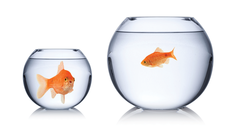Batch processing image files with imgp
Rapid Resizer

© Lead Image © grafner, 123RF.com
In no time at all, imgp can change the resolution of images, as well as convert files from PNG to JPEG, remove metadata, and rotate images.
Suppose you have hundreds or even thousands of photos that you want to present on a web page. If the images use the original camera resolution, they could severely slow down or even paralyze a website populated with this data. Optimizing the images can save bandwidth on the network and space on the storage medium.
With a large number of images, a batch processing tool such as imgp [1] comes in handy. The command-line tool, formerly known as imgd and written in Python, provides functions for resizing images in JPEG and PNG formats, as well as converting from PNG to JPEG, rotating the images, and removing metadata.
Even with thousands of files, imgp does its job at lightning speed. The developer, Arun Prakash Jana, achieves this through multicore processing, an adaptive algorithm, and the Python Pillow library [2].
[...]
Buy this article as PDF
(incl. VAT)
Buy Linux Magazine
Subscribe to our Linux Newsletters
Find Linux and Open Source Jobs
Subscribe to our ADMIN Newsletters
Support Our Work
Linux Magazine content is made possible with support from readers like you. Please consider contributing when you’ve found an article to be beneficial.

News
-
Parrot OS Switches to KDE Plasma Desktop
Yet another distro is making the move to the KDE Plasma desktop.
-
TUXEDO Announces Gemini 17
TUXEDO Computers has released the fourth generation of its Gemini laptop with plenty of updates.
-
Two New Distros Adopt Enlightenment
MX Moksha and AV Linux 25 join ranks with Bodhi Linux and embrace the Enlightenment desktop.
-
Solus Linux 4.8 Removes Python 2
Solus Linux 4.8 has been released with the latest Linux kernel, updated desktops, and a key removal.
-
Zorin OS 18 Hits over a Million Downloads
If you doubt Linux isn't gaining popularity, you only have to look at Zorin OS's download numbers.
-
TUXEDO Computers Scraps Snapdragon X1E-Based Laptop
Due to issues with a Snapdragon CPU, TUXEDO Computers has cancelled its plans to release a laptop based on this elite hardware.
-
Debian Unleashes Debian Libre Live
Debian Libre Live keeps your machine free of proprietary software.
-
Valve Announces Pending Release of Steam Machine
Shout it to the heavens: Steam Machine, powered by Linux, is set to arrive in 2026.
-
Happy Birthday, ADMIN Magazine!
ADMIN is celebrating its 15th anniversary with issue #90.
-
Another Linux Malware Discovered
Russian hackers use Hyper-V to hide malware within Linux virtual machines.

